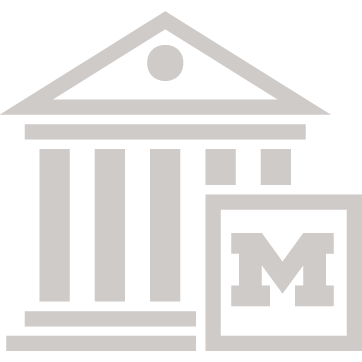Information Technology (IT) policies articulate the university's vision, strategy, and principles as they relate to the use of information and information technology resources. They are designed to guide organizational and individual behavior and decision-making. University-wide IT guidance comes in these categories:
- IT Policies
- IT Standards
- IT Guidelines
- IT Procedures
IT Policy Development
The development and management of IT policies is conducted in compliance with SPG 601.35, Development of University Policy, and follows the Procedures for Development of University Policy.
IT policies must be credible, implementable, enforceable, and sustainable. To that end, they should reflect the following:
 U-M environment
U-M environment
Alignment to core academic, research, learning and teaching, and administrative missions. Legal and regulatory environment
Legal and regulatory environment
Compliance with all statutory requirements. Risk environment
Risk environment
Accounting for an ever-changing array of environmental, technological, and operational risks. Best practices
Best practices
Consideration for industry and higher education best practices.
IT Policy Management and Oversight
The Vice President for Information Technology and Chief Information Officer (VPIT-CIO) has oversight responsibility for IT policy. Information Assurance (IA), by delegation of the VPIT-CIO, coordinates the IT policy function for U-M, with responsibility for policy development, education, and maintenance. IA maintains a repository of institutional IT policies, standards, and guidelines.
The IT Policy Development and Administration Framework specifies the process for drafting new—or revising old IT policies.
The VPIT-CIO has final approval authority for IT standards, guidelines, and procedures.
